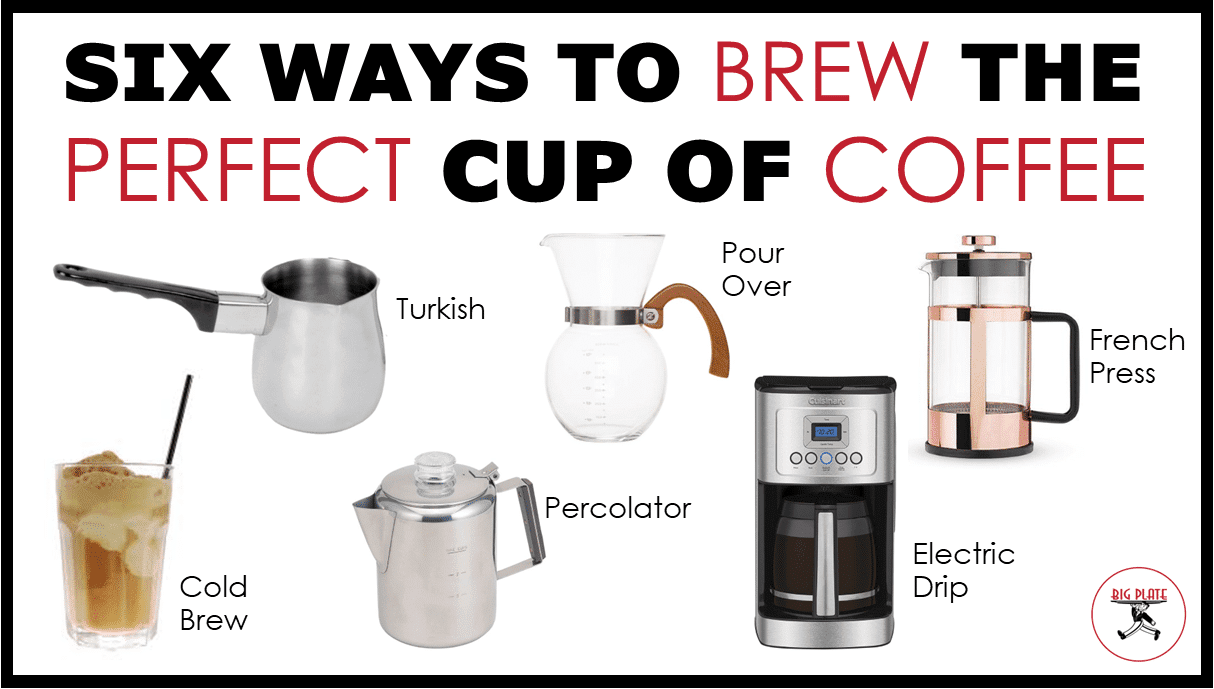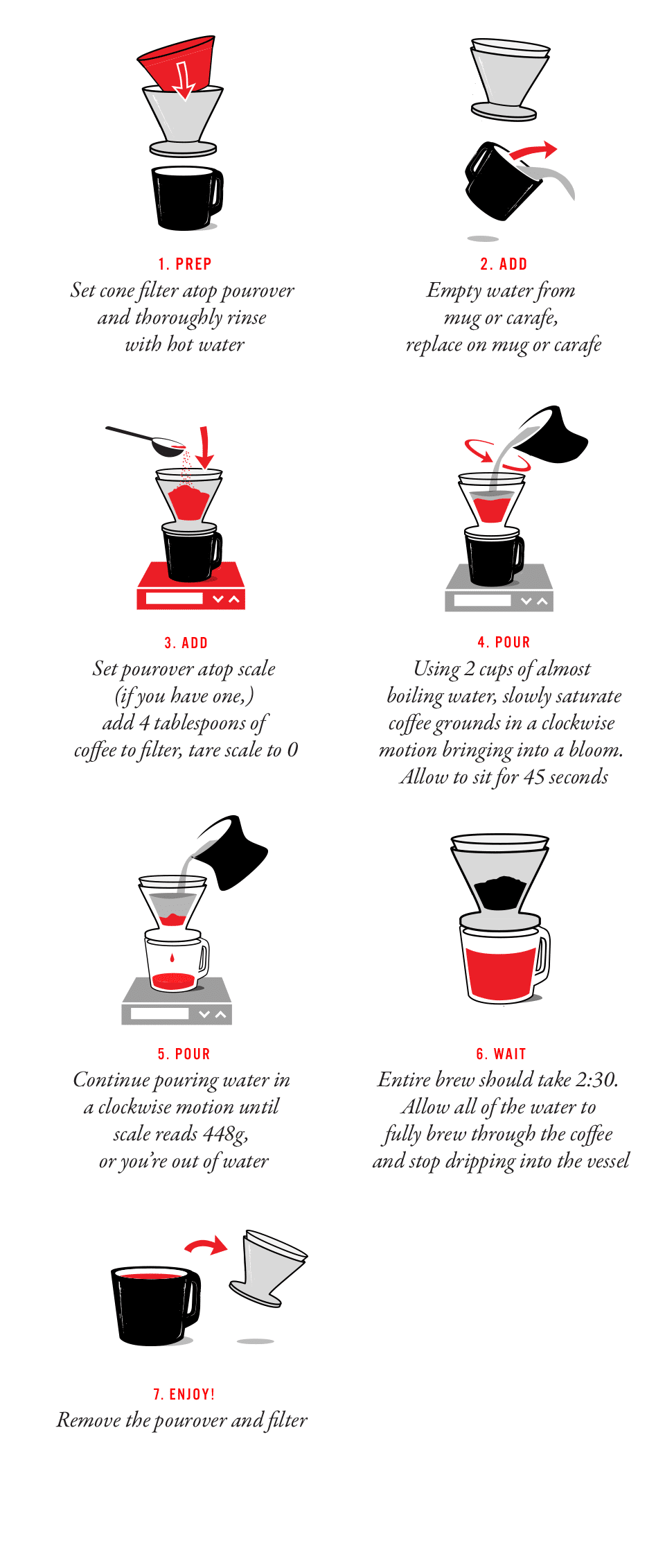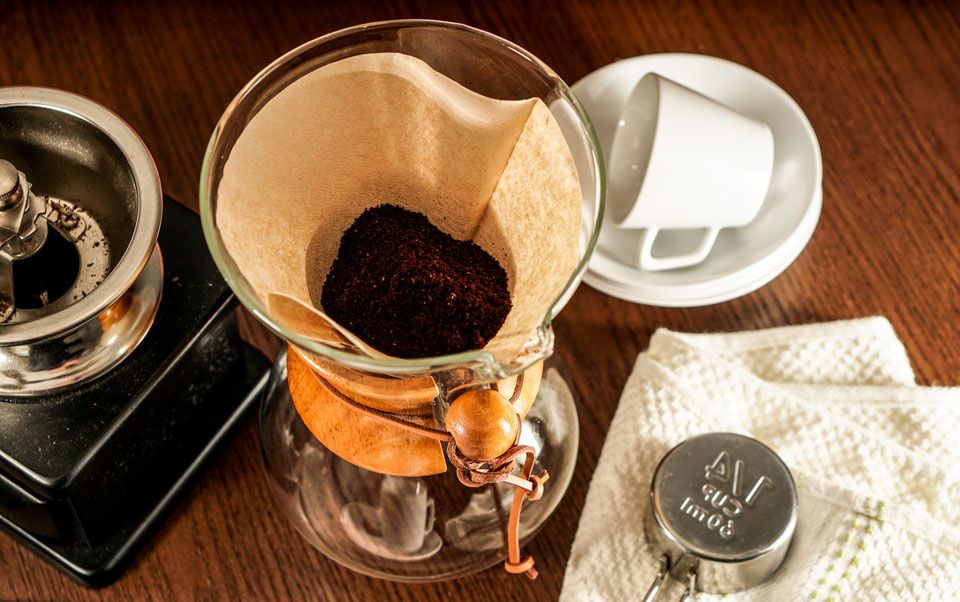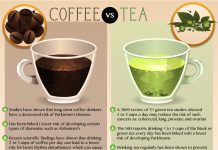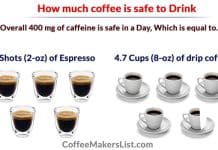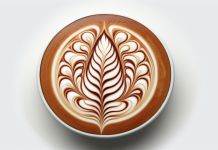Have you ever wondered how to brew the perfect cup of coffee? We all have our own preferences when it comes to this beloved, aromatic beverage, and finding the right balance of flavor and strength can be a true art. From selecting the right beans to mastering the brewing process, there are several factors that can influence the quality of your cup of joe. In this article, we will guide you through the steps to achieve coffee nirvana, sharing tips, and tricks to help you brew a truly exceptional cup every time. So grab your favorite mug and get ready to embark on a journey to coffee perfection!
Choosing the Right Coffee Beans
When it comes to brewing the perfect cup of coffee, one of the most important factors to consider is the quality and origin of the coffee beans. The origin of the beans plays a significant role in the flavor profile of the coffee. Different regions produce coffee with distinctive taste characteristics. For example, beans from Ethiopia often offer fruity and floral notes, while beans from Colombia are known for their mild and balanced flavors.
Another important decision to make is whether to opt for single-origin or blend coffee beans. Single-origin beans are sourced from a specific region or estate, providing a unique flavor profile that showcases the characteristics of that particular area. On the other hand, blend coffee beans are a combination of beans from different regions, creating a well-balanced and consistent flavor.
Additionally, you’ll need to choose between two main types of coffee beans: Arabica and Robusta. Arabica beans are known for their delicate flavors, while Robusta beans offer a stronger and more robust taste. Consider your personal preferences when deciding which type of beans to go for.
Lastly, the roast level of the beans will also impact the flavor of your coffee. Lighter roasts tend to preserve the natural flavors of the beans, while darker roasts tend to have a bolder and more intense taste. Experiment with different roast levels to find the one that suits your taste preferences.
Grinding the Coffee Beans
Once you have chosen the perfect coffee beans, it’s time to grind them. Using whole beans rather than pre-ground coffee is key to ensuring freshness in your cup of joe. When coffee beans are exposed to oxygen, they begin to lose their flavors and aromas. By grinding the beans just before brewing, you can unlock the full potential of the coffee.
The grind size of your coffee beans is crucial and must be selected based on your chosen brewing method. Finer grinds are ideal for espresso machines, while medium grinds work well for drip coffee makers. Coarser grinds are commonly used for French press brewing. Using the appropriate grind size will ensure that the coffee extracts properly and results in a well-balanced flavor.
Investing in a quality burr grinder is worth considering as it allows for a more consistent grind size. Burr grinders crush the beans between two abrasive surfaces, resulting in a more uniform particle size compared to blade grinders. This ensures an even extraction and ultimately a better-tasting cup of coffee.
Additionally, proper storage of coffee beans is essential to maintain their freshness. Store your beans in an airtight container in a cool, dark place away from moisture, heat, and light. This will help prevent oxidation and prolong the life of your coffee beans.
Measuring the Coffee and Water
Finding the right balance between coffee and water is crucial for brewing a perfect cup of coffee. Maintaining the correct coffee-to-water ratio is essential. A common ratio is using 1 to 2 tablespoons of coffee for every 6 ounces of water. However, feel free to adjust this ratio according to your personal taste preferences.
To calculate the amount of coffee needed, consider the number of cups you want to brew and your desired strength. A kitchen scale can be a useful tool for a precise measurement, ensuring consistency in each brew. Alternatively, measuring scoops or tablespoons can be used if a scale is not available.
It’s also important to consider the water-to-coffee strength preference. Some people enjoy a stronger cup, while others prefer a more mellow taste. Adjust the amount of coffee used accordingly to achieve your preferred strength.
Accurate measurement of the water is equally important. Using a measuring cup or kettle with clear markings will help ensure that you add the correct amount of water to your brewing device.
Preparing the Water
The quality of the water used in the brewing process can significantly impact the flavor of your coffee. It is recommended to use filtered water to remove any impurities that may affect the taste. Tap water varies in quality depending on your location, so using filtered water can help guarantee a clean and crisp cup of coffee.
The ideal water temperature for brewing coffee is typically between 195°F (90.6°C) and 205°F (96.1°C). Boiling water is too hot and can lead to over-extraction, resulting in a bitter taste. If you don’t have a thermometer, a good rule of thumb is to let the water cool slightly after boiling for about 30 seconds.
Avoid overheating the water as it can scorch the coffee grounds and extract undesirable flavors. Boiling water can also cause rapid evaporation of some of the more delicate compounds in coffee, leading to a loss of complexity in flavor.
Another pro tip is to preheat your brewing equipment before brewing. This helps maintain a consistent temperature throughout the brewing process, resulting in a more even extraction and improved flavor.
Choosing the Brewing Method
With a wide variety of brewing methods available, choosing the right one for your preferences is vital. Each method has its own unique characteristics that can impact the taste, body, and overall experience of your coffee. Here are a few popular brewing methods to consider:
Drip Coffee Maker
Drip coffee makers are convenient and commonly found in households. They typically involve pouring water into a reservoir, which is then heated and dripped through a filter containing coffee grounds. This method produces a clean and consistent cup of coffee, making it a popular choice for everyday brewing.
French Press
The French press is known for its simplicity and ability to produce a full-bodied and flavorful coffee. Coarsely ground coffee is immersed in hot water, allowing it to steep before being pressed down with a plunger to separate the grounds from the liquid. This method results in a rich and robust coffee with more natural oils and sediment.
Pour Over
Pour over brewing involves a slow and controlled pouring of hot water over coffee grounds placed in a filter cone or dripper. This method allows for precise control over the water flow rate, resulting in a well-extracted and well-balanced cup of coffee. It highlights the unique flavors of the beans and offers a clean and nuanced taste experience.
AeroPress
The AeroPress is a versatile and portable brewing method that uses air pressure to extract flavors from coffee. It can be used in both inverted and traditional methods, allowing for various brewing techniques. The result is a clean and smooth cup of coffee with a wide range of flavor possibilities.
Cold Brew
Cold brew is a method where coffee grounds steep in cold water for an extended period, typically 12 to 24 hours. This slow extraction process produces a smoother and less acidic coffee. Cold brew is enjoyed over ice or diluted with water, making it a refreshing choice, especially during warmer months.
Brewing Techniques
Each brewing method mentioned above requires different techniques to achieve optimal results. Here’s a brief overview of the brewing techniques commonly associated with these methods:
Drip Coffee Maker: Proper Use and Maintenance
When using a drip coffee maker, ensure that the coffee grounds are evenly distributed in the filter to promote consistent extraction. Follow the manufacturer’s instructions for brewing and regularly clean your machine to prevent buildup and maintain the quality of your coffee.
French Press: Steeping and Plunging
To brew coffee using a French press, allow the coffee grounds to steep in hot water for a few minutes. Press the plunger slowly and steadily to separate the grounds from the liquid, and pour the coffee into your cup. Avoid pressing too forcefully to prevent grounds from passing through the filter.
Pour Over: Slow and Controlled Pouring
For pour over brewing, start by wetting the filter with hot water to remove any paper flavor. Slowly pour hot water over the coffee grounds in a circular motion, allowing the water to fully saturate the grounds. Control the pour rate and maintain a consistent flow to ensure an even extraction.
AeroPress: Inverted or Traditional Method
The AeroPress offers flexibility in brewing techniques. The inverted method involves placing the plunger at the end of the brewing chamber before adding coffee and water, allowing for a longer immersion time. The traditional method follows the standard assembly, with shorter brewing time and less immersion.
Cold Brew: Steeping Time and Filtration
When making cold brew, combine coffee grounds and cold water in a container and let it steep for the desired duration. After steeping, filter the coffee to separate the grounds and concentrate. Experiment with steeping times to find the right balance between flavor extraction and strength.
Brewing Time
The brewing time can significantly affect the taste of your coffee. Brewing time is influenced by various factors such as grind size, brewing method, and personal preferences. Here are a few considerations when it comes to brewing time:
Determining the Optimal Brewing Time
The optimal brewing time varies depending on the brewing method and the desired strength of your coffee. It is important to follow the recommended brewing time provided by the manufacturer or recipe guidelines initially and then adjust to suit your taste preferences.
Adjusting the Brewing Time Based on Grind Size
Finer grinds generally require less brewing time, as the increased surface area allows for faster extraction. On the other hand, coarser grinds may require longer brewing times to ensure proper extraction and flavor development.
Experimenting with Different Brew Times
To find your perfect cup of coffee, don’t be afraid to experiment with different brewing times. Slight adjustments in brewing time can result in noticeable changes in flavor and strength. Start by varying the brew time by 15-30 second increments to determine your preferred taste.
Monitoring the Extraction Time
For more precise control over the brewing process, you can also monitor the extraction time. Extraction time refers to the duration in which water comes into contact with the coffee grounds. Ideal extraction times can vary depending on the brewing method and personal taste preferences. Use a timer to guide you and make adjustments as needed.
Controlling Water Temperature
Water temperature plays a crucial role in extracting the flavors from coffee. It can significantly impact the taste, acidity, and overall balance of the brew. Here’s what you need to know about controlling water temperature:
Understanding Temperature’s Impact on Flavor
Water temperature affects how coffee grounds release their flavors. Higher temperatures tend to extract more compounds from the coffee, resulting in a fuller-bodied cup. Lower temperatures can highlight certain nuances and create a more delicate taste. Finding the right temperature for your preferred flavor profile is essential.
Using Thermometers and Variable Temperature Kettles
To control the water temperature accurately, you can use a thermometer to measure the temperature as the water heats. Variable temperature kettles are also available, allowing you to set and maintain the desired water temperature throughout the brewing process. These tools ensure consistency and precision in your brew.
Preheating the Brewing Equipment
Preheating is a crucial step to maintain a stable brewing temperature. By preheating your brewing equipment, such as a French press or pour-over dripper, you help to retain the heat of the water during brewing. This promotes a more even extraction and helps prevent temperature loss during the brewing process.
Avoiding Rapid Temperature Drops
Once the water is heated to the desired temperature, avoid rapid temperature drops to ensure consistent extraction. Pour the water immediately after reaching the desired temperature to minimize heat loss. Preventing sudden temperature drops helps maintain the proper extraction and flavor profile of your coffee.
Filters and Filtration Methods
Filters play an important role in the brewing process by removing unwanted sediments and oils from the coffee. Different filter materials offer varying levels of clarity, body, and flavor in your cup. Consider these options when choosing the right filter for your brewing method:
Paper Filters
Paper filters are commonly used and widely available. They effectively remove coffee oils and produce a cleaner cup of coffee with less sediment. They come in various sizes and styles, so make sure to choose the appropriate filter for your specific brewing device.
Metal Filters
Metal filters, such as stainless steel or mesh, offer a more eco-friendly alternative to paper filters. They allow the natural oils and micro-fines to pass through, resulting in a fuller-bodied and more robust cup of coffee. Metal filters require proper cleaning to avoid residue build-up.
Cloth Filters
Cloth filters, often made of cotton or hemp, offer a reusable and sustainable option for coffee brewing. They allow some but not all oils to pass through, creating a balanced cup of coffee with a medium body. Proper cleaning and maintenance of cloth filters are necessary to prevent mold or unpleasant flavors.
Choosing the Right Filter for Your Brewing Method
Consider the desired flavor profile and the specific requirements of your chosen brewing method when selecting the appropriate filter. Experimenting with different filters can help you discover the nuances and characteristics of your coffee beans.
Post-Brewing Considerations
Even after the brewing process is complete, there are a few additional steps to take to ensure the best coffee experience. Here are some post-brewing considerations:
Stirring and Blooming
Stirring the coffee after brewing can help ensure a consistent flavor throughout your cup. This is particularly important for methods such as French press, where the coffee grounds may settle at the bottom. Additionally, allowing the coffee to “bloom” during the brewing process by pouring a small amount of water over the grounds and letting them expand before fully brewing can enhance the flavor extraction.
Allowing the Coffee to Rest
After the brewing process, give your coffee a few moments to settle and develop its aroma and flavors. Letting the coffee sit for a minute or two before pouring can result in a more refined taste and a richer mouthfeel.
Avoiding Reheating
It is best to avoid reheating coffee to maintain its optimal taste. Reheating can lead to a loss of flavor and quality. If you have brewed more coffee than you can consume, consider pouring it into an insulated container to keep it warm for later enjoyment.
Cleaning and Maintaining Brewing Equipment
Regular cleaning and maintenance of your brewing equipment are essential for ensuring the longevity and performance of your tools. Follow the manufacturer’s instructions for cleaning and have a routine for descaling or removing any buildup to prevent any unwanted flavors from affecting your coffee.
By considering each of these aspects – from choosing the right coffee beans to properly cleaning your brewing equipment – you can elevate your coffee brewing game and achieve the perfect cup of coffee every time. Enjoy the process, experiment with different techniques, and savor the wonderful flavors that a well-brewed cup of coffee has to offer. Cheers!



